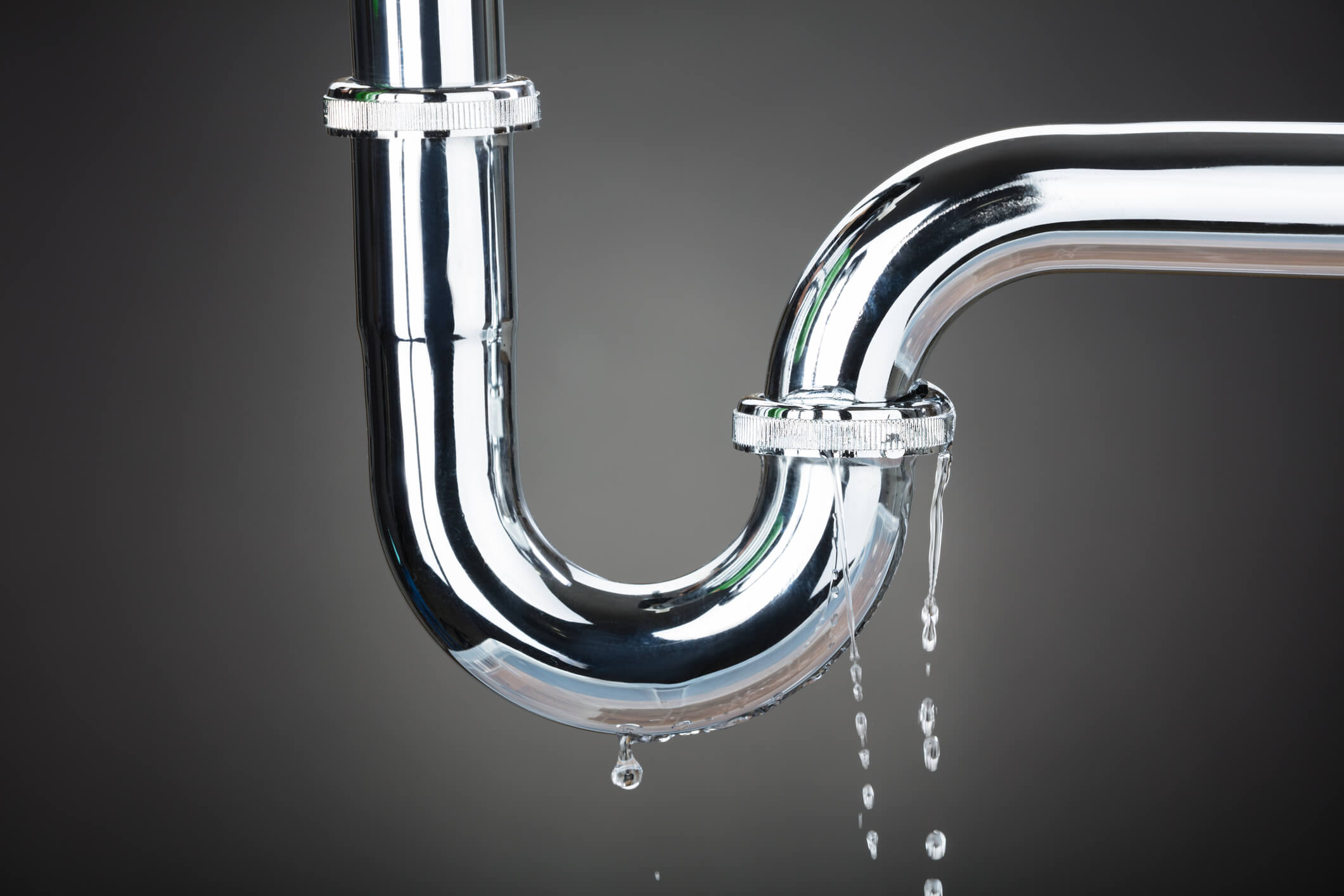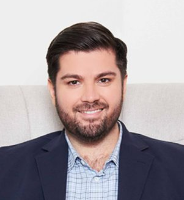You know the saying, "If it sounds too good to be true, it probably is"? Well, when it comes to mold remediation, this notion is correct 9.9 out of 10 times. There you are facing down two estimates for a remediation project, and they’re completely different: one is on the low-cost side with no demolition, and another on the "wow, that’s expensive side and you’re busting up my entire house." Situations like these pop up far too frequently and can leave you with questions like: what is a mold fogger, does it work, and why is it not the standard remediation protocol?

They’re valid questions! Why pay a lot more for a project when you could only spend a couple of thousand dollars? That’s a lot of money on the line, and like many others, you’re probably wondering why there’s such a difference in cost and scope of work. It can be tempting to opt for a lower price with less work. But, at what greater cost?
The unfortunate truth is that mold growth hasn’t received a lot of time in the spotlight. Think about it: how often do we hear about mold? It’s usually only in passing! This current state has led to a long list of misinformation, misguided decisions, and uncertainty.
All of that combined has resulted in failed remediation projects that not only waste money but also lead to the continuation of adverse health effects due to exposure. Understanding issues such as using a mold fogger can help ensure that your home is a safe indoor environment for both you and your family.
Here’s what you need to know.
What is a Mold Fogger?
A mold fogger aerosolizes a chemical and releases it into an indoor environment. The vaporized formula then combines with any particles in the air, such as mold spores, and depending upon the product, weighs them down enough to fall to the surface and/or breaks them down into smaller particles.
Using some products, such as Benefect Decon 30, in a mold fogger can help weigh down these smaller particles, forcing them to the floor. However, in the absence of cleaning to remove these particles, they’ll still remain in your environment, contributing to your exposure. Other products designed to "kill", "neutralize" or "deactivate" typically break spores down into smaller fragments, which can still cause adverse health reactions in some. Also, this doesn't fix the source of the problem or eliminate the microbial growth!
At first glance, this seems like a dream way to remove mold. It’s less invasive, quick, and low-cost. The question then is, why isn’t this the standard practice for all mold remediation companies? Are people around the world being ripped off?
What’s the Deal with Mold?
As a one-stop shop protocol for remediation, using a mold fogger is an absolute no-go. Essentially, it’s a low-cost band-aid solution to any contamination problem.
The fundamental problem with this technique is a lack of understanding of the enemy of the hour: mold. Creating a better understanding and awareness of this fungus among us can help you better recognize why using a mold fogger is not the magic bullet many companies claim that it is.
Mold 101
Over 100,000 species of mold have been identified by researchers so far, and they exist all over the world. Each species reproduces by creating microscopic spores and releasing them into the surrounding environment.¹’² If these spores land on a habitable surface, they’ll begin to transition into a living mold colony.
The process is similar to a weed’s lifecycle.
Picture this:
A little dandelion sprout grows into a strong little weed and then, during the summer, releases those tiny little white puffs into the air. These puffs will remain seeds until they find a surface with all of the components they need for growth. Once they happen upon this habitable environment, they’ll put down roots and start working on the next generation of dandelions.
Mold spores are incredibly similar. These non-living particles will remain spores until they find that perfect habitable surface. After landing on it, they’ll transition into a living organism, put down roots called hyphae, and start that reproductive process all over again.

The Root Factor
You’re probably thinking, "Great, what’s the big deal with that?" As many of us know, once a weed has established its territory and put down roots, it's difficult to kick completely. They’re renowned for being pesky and the bane of a homeowner's lawn care for a reason, after all.
Mold is exactly the same way. Once those roots are established, you’ve got to pull them up, roots and all, in order to ensure the organism is removed. Otherwise, the growth can come right back even though the visible surface mold has been eliminated. Hence, why any and all mold growth should be actively avoided and handled properly.
The Growth Factor
So, what does mold need to grow? Thanks to their hardy nature, spores typically only need two main components to transition into the land of the living.³
These two components are:
- Moisture
- Food
If these two are present for 24–48 hours, most mold spores can maximize the opportunity and begin to put down those roots on the surface. This is why time is always of the essence when it comes to addressing any moisture-related events in a home.
The Home Factor
Now, let’s bring this issue into the home. Mold growth can easily pop up in a home if steps aren’t taken to prevent it.

When it comes to food, edible options abound inside of a home. Like teenagers, this fungus among us is not picky when it comes to things that it will eat. Between the particles floating around, like skin cells, dust, and other organic matter, and the materials of the home itself, like wood, paper, carpet, drywall, and glue, our indoor spaces are essentially big buffets for mold.
That leaves us with moisture. A leaky pipe, flooded basement, malfunctioning appliance, hole in the roof, clogged gutter, condensation on HVAC coils, or window left open during a storm can all give a lucky mold spore the opportunity to grow. And, while some species require a high level of moisture, others, like Aspergillus, require very little to survive and thrive. That means that even high humidity in a home can result in a colony.
This is why moisture is public enemy number one in a home.
The Size Factor
Spores and mycotoxins (and oftentimes bacteria since they grow in the same conditions as mold) are teeny tiny. They’re so small that they’re measured in a unit called microns. A micron is 1,000th of a millimeter, meaning you’d have to line up a thousand microns to equal the distance between the two little lines on a ruler. The EPA classifies these particles as particulate matter and groups them into two categories.⁴
These two categories are:
- PM10: particles that have a diameter of around 10 micrometers or less.
- PM2.5: fine particles that have a diameter of around 2.5 micrometers or less.
Their small size makes them a nuisance in a variety of ways.
These include:
- They can zip into a home at any time or hitch a ride on clothing, shoes, or a pet's fur
- They can penetrate deep into porous surfaces such as mattresses and cloth furniture
- They’re invisible and can float around in the air, land on surfaces, or hang out with dust in dark corners, and you’d never know
- It can take time for a colony to grow large enough to be noticeable
- They can slip into hard-to-see areas like walls, carpeting, and attic spaces and become colonies
- They can make their way into the body
Basically, they’re little contamination pests. But, with active home maintenance prevention, they can be removed and the opportunities for growth eliminated.
The Health Factor
As a mold colony grows, it releases those microscopic particles into the surrounding environment. Some species of mold also release microscopic toxins called mycotoxins when threatened as well, further adding to the particle party.⁵
This gave birth to the common misconception that since mold is everywhere, it’s no big deal when it’s indoors. Not true! Yes, spores and mycotoxins have been blown all over the planet. But it’s a big, wide world out there, and they had a massive amount of space to disperse through.
This situation is nowhere near the same as mold growth indoors. Thanks to modern construction techniques pushing for net-zero energy efficiency, there’s very little airflow between the indoor and outdoor environments. That means that most of the spores and mycotoxins released by the colony remain trapped within the walls of the home. The result is a contaminated environment full of particles.
The health factor comes in largely due to the particle size in question. Thanks to their teeny, tiny size, they can be inhaled, absorbed, or ingested into the body.⁶ When the body sees these particles, it tags them as foreign invaders and deploys the immune system to get rid of them.
When you encounter a few of these little particles throughout the day, this situation typically isn’t a problem. Your body will get rid of them in a jiffy. However, sitting inside a home and breathing in who knows how many mold spores, mycotoxins, and bacteria particles is an entirely different story.
This level of exposure can result in the immune system getting overwhelmed and/or malfunctioning. When this occurs, it opens the door to a long list of symptoms as well as related autoimmune conditions, including Aspergillosis, Mast Cell Activation Syndrome, and Chronic Fatigue Syndrome.
Some common symptoms of exposure include:
- Headaches and migraines
- Rashes
- Hair loss
- Brain fog
- Chronic fatigue
- Mood swings
- Hormone imbalances
- Digestive issues
- Muscle and joint pain
- Respiratory problems

The problem is that no two individuals respond to exposure the same way. While some people may have the occasional sinus infection and fatigue, others may develop over 30 symptoms and an autoimmune condition. Researchers are still attempting to determine exactly how mold affects the body and why some people are more susceptible to adverse reactions, but it’s a tricky subject to nail down.⁷’⁸’⁹¹⁰’¹¹ Factors such as genetics, length of exposure, species of mold, presence of mycotoxins, presence of bacteria, and immune system status all play a role.
The potential for any health problems is reason enough to dive deep into topics such as using a mold fogger and truly understanding what this technology is and isn’t capable of. It’s also what showcases the caliber of a remediation company. At the end of the day, a remediation protocol should be built around the purpose of protecting those within the home and ensuring they’re not continually exposed to these indoor contaminants and suffering from the reactions they can cause.
How Effective is Fogging For Mold?
Using a mold fogger is not effective at dealing with an indoor source of contamination. It can be used as a piece of the entire process, but it will not resolve the mold properly. Using a mold fogger will not resolve the moisture problem, does not remove the hyphae from the building material, does not penetrate deep into interstitial cavities behind walls or ceilings, and does not remove all of the particles that can trigger adverse health reactions.
Here's a deeper dive:
The Four Main Reasons
1. What about the moisture?
Simply using a mold fogger for remediation does not take into consideration what led to the mold in the first place: a water damage issue. A source of water, humidity, or moisture had to take place at some point, and the end result was mold growth.
Using a mold fogger alone will not resolve the moisture issue.
If the issue that led to the water damage isn’t remedied, a habitable environment for mold will continue to remain in the home. When a spore comes in contact with this wet surface, it will create a whole new colony, and the entire process is started anew.
2. What about those roots?
Going back to the hyphae, this root system will physically grow on whatever surface the mold colony is on. When that happens to be porous, such as drywall, carpet, or insulation, these roots will reach deep within the pockets of the surface.

Using a mold fogger for remediation does not remove the hyphae from the building material.
The result: mold will grow back again. As the mold returns, it will continue its reproductive cycle, pumping spores and potentially mycotoxins back into that indoor space. Essentially, it’s money not well spent.
Not to mention, that’s why almost every dry fogging mold remediation company out there will recommend you have your home on an ongoing treatment plan. The "solution" is a band-aid and it helps create re-occurring revenue from customers because you will absolutely have to complete the process again in the future to remove the new contamination that was created.
3. What About the Hidden Problems?
Remember, thanks to the small size of spores and mycotoxins, they can slowly make their way inside of the porous surface as well. Not only is this a contamination issue, but it allows mold colonies to develop in hidden areas like behind drywall.
The process of using a mold fogger will not be able to penetrate deep into interstitial cavities behind walls or ceilings.
Without addressing the root cause of the problem, the structural degradation that often accompanies the presence of mold, and the contamination existing within, the surface will continue to degrade and mold will continue to colonize behind the walls or ceilings that were "treated". All of this means that contamination will continue to swirl around your environment.
In a nutshell, the end result is once again wasted money and a toxic environment.
4. What about the dead mold?
As the EPA states, even dead mold can trigger adverse health reactions.¹² That’s why the Institute of Inspection Cleaning and Restoration Certification (IICRC) says that "Remediators should not mist or fog disinfectants or sanitizers in an attempt to kill mold in lieu of source removal."¹³ Why?
Using a mold fogger does not remove all of the particles that can trigger adverse health reactions.
While utilizing a mold fogger may deactivate spores and help kill surface mold, it then leaves all of these particles behind. Unless every square inch of the indoor environment is properly decontaminated, these particles will remain behind and continue triggering reactions. And again, that’s not even including what may be lurking within surfaces that fogging can not address.
Complete removal is a key piece of the puzzle.
If Using a Mold Fogger Alone is a No-No, What Works?
Unfortunately, there’s no magic fix for mold. The ultimate goal of any remediation project should always be to create a safe and healthy indoor environment that supports your healing journey. That means handling the problem correctly and going through an extensive process to achieve this goal.
Yes, that usually means demolition and a much larger bill, but the contamination must be physically removed and the source that led to the problem resolved. When it comes to simply using a mold fogger to deal with the problem, the cheap and demolition-free route will not give you the results you hoped for, and it will not create an environment that you and your family can heal in.
A comprehensive remediation protocol may seem more expensive up front, but it will save you a lot of time, money, and energy in the long run once the problem is resolved. That’s why you should always expect a qualified mold remediation company to help you based on three pillars for success.
These three pillars are:
- Remediate the sources and mold properly
- Identify and address the problems that led to the sources in the first place (otherwise, the mold will just grow back)
- Eradicate all contamination that exists from the mold problem, including mycotoxins and bacteria

Each step addresses the issues listed above as to why using a mold fogger is not the go-to method for remediation. When interviewing companies, make sure to ask them specific questions that ensure their process ticks each box above. And, when in doubt, contact an expert to get their take on the situation.
One such company that bases its entire remediation process on the foundation laid out above is HomeCleanse. The thorough process used during every project has made them experts in assisting immunocompromised individuals.
When Can You Use a Mold Fogger?
Fogging can be completed in "Phase 2" of remediation, where surfaces of the home are cleaned to remove any contamination that was created by the mold colony.
This is only something that should be tackled after "Phase 1" is completed, which includes removing the sources of mold that are creating the contamination and correcting the conditions that led to the mold growing in the first place. If a company does "Phase 2" without doing "Phase 1" of remediation first, you’ll end up having to reinvest in both phases again. But this time, in the right order to successfully solve the problem.
This failed attempt results in more money out of your pocket, additional time wasted, and the inability to heal. So, while fogging is a very useful part of mold remediation, it should never be the end-all-be-all.
Making a Smart Investment
At this moment in time, mold remediation is an expensive endeavor. That’s why the cheaper alternatives can seem so appealing. But, you can’t put a price on health. Not to mention, no one wants to invest thousands of dollars into a project that's doomed to fail from the start and then turn around and spend even more money finding someone to actually fix the issue.
Creating better awareness of this fungus among us and shining a light on topics such as using a mold fogger for remediation is crucial so that you and your family aren’t suffering from chronic symptoms due to a toxic environment.

The more you know, the more preventative steps you can take to avoid mold, the faster you can address any issues that pop up, and the healthier your indoor space will be. Plus, the more we talk about and bring attention to the health crisis that toxic environments are causing, the greater the push for change will be worldwide.
Health begins at home.™
Citations:
- Environmental Protection Agency. (n.d.). Mold. EPA. Retrieved from https://www.epa.gov/mold.
- Centers for Disease Control and Prevention. Basic facts about mold and dampness. Centers for Disease Control and Prevention. Retrieved from https://www.cdc.gov/mold/faqs.htm.
- Lstiburek, J., Brennan, T., & Yost, N. (2002, January 15). Rr-0208: What you need to know about mold. Building Science Corporation. Retrieved from, https://www.buildingscience.com/documents/reports/rr-0208-what-you-need-to-know-about-mold/view.
- World Health Organization. (n.d.). Mycotoxins. World Health Organization. Retrieved from https://www.who.int/news-room/fact-sheets/detail/mycotoxins.
- Nchh. (n.d.). Mold. NCHH. Retrieved from https://nchh.org/information-and-evidence/learn-about-healthy-housing/health-hazards-prevention-and-solutions/mold/
- EPA. (n.d.). Health and Environmental Effects of Particulate Matter (PM). EPA. Retrieved from https://www.epa.gov/pm-pollution/health-and-environmental-effects-particulate-matter-pm.
- Curtis, L., Lieberman, A., Stark, M., Rea, W., & Vetter, M. (2004). Adverse health effects of indoor molds. Journal of Nutritional & Environmental Medicine, 14(3), 261-274.
- Bush, R. K., Portnoy, J. M., Saxon, A., Terr, A. I., & Wood, R. A. (2006). The medical effects of mold exposure. Journal of Allergy and Clinical Immunology, 117(2), 326-333
- Fisk, W. J., Lei-Gomez, Q., & Mendell, M. J. (2007). Meta-analyses of the associations of respiratory health effects with dampness and mold in homes. Indoor air, 17(4), 284-296.
- Wild, C. P., & Gong, Y. Y. (2010). Mycotoxins and human disease: a largely ignored global health issue. Carcinogenesis, 31(1), 71-82.
- Environmental and Occupational Health Assessment Program, & Environmental and Occupational Health Assessment Program, & Health Science Section, Mold Basics for Primary Care Clinicians (2009). Hartford, CT; Connecticut Department of Public Health. , H. S. S., Mold Basics for Primary Care Clinicians 1–10 (2009). Hartford, CT; Connecticut Department of Public Health.
- About the IICRC. IICRC. (2022, June 22). Retrieved from https://iicrc.org/abouttheiicrc/#.
- EPA. (n.d.). Should I use bleach to clean up mold? EPA. Retrieved from https://www.epa.gov/mold/should-i-use-bleach-clean-mold.

